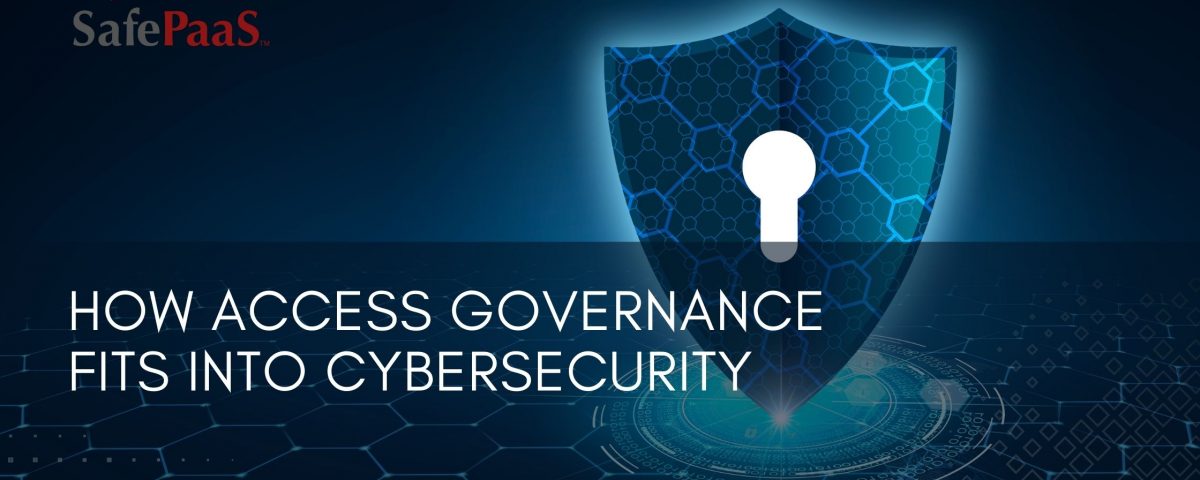How Access Governance Fits Into Cybersecurity


How Access Governance Fits Into Cybersecurity
Cyber threats are omnipresent, and data breaches have become a common headline. Effective access governance is indispensable for strengthening an organization's cybersecurity posture. To confront this challenging threatscape, your organization must implement strong access governance strategies and fortifications for enhancing and maintaining cybersecurity.
In the second blog in our latest blog series, "Top Five Access Governance Google Searches - Answered," we will explore the pivotal role that access governance plays in cybersecurity and consider the core concepts, challenges, and best practices surrounding access governance.
The Significance of Access Governance
Access governance manages and controls user access to your systems, data, and resources it is essential to cybersecurity because it determines who can access what, when, and how. By implementing access governance, your organization can mitigate the risk of unauthorized access and data breaches, improve compliance, and enhance your overall security posture.
Core Concepts of Access Governance
The following core concepts collectively enable your organization to establish and maintain a strong access governance framework, which is key for maintaining data security, compliance, and effective access management. These concepts provide the structure and practices necessary to grant, review, and revoke access in a controlled, auditable, and secure way.
Identity Management: Access governance begins with establishing identities for users, employees, third-party suppliers, etc. Each identity is granted specific privileges based on their role, responsibilities, and the principle of least privilege, which restricts access to the minimum for each user.
Authentication and Authorization: Authentication confirms the identity of users, typically through passwords or multi-factor authentication. Authorization, on the other hand, defines what actions and resources the authenticated user can access.
Policy-Based Access Control (PBAC): PBAC assigns access rights based on access policies set by your organization. For example, a marketing manager might have different access permissions in your organization than a software developer.
Access Certification: Regular access reviews should be conducted to ensure that your users maintain the appropriate level of access. Employees change roles, and job requirements evolve, so keeping access permissions current is critical.
Best Practices for Access Governance
Implementing the following best practices in your access governance program collectively bolster your organization's security, efficiency, and audit compliance in access management by aligning your access with business needs and regulatory standards.
Develop Strong Identity Management Processes: Implement comprehensive identity management solutions with onboarding, offboarding, and periodic access certification review capabilities. This will ensure that you have precise control over who accesses what within your organization.
Policy-Based Access Control (PBAC): Use a PBAC solution to streamline permission assignments based on your access policies. Doing so simplifies access governance and significantly reduces the risk of over- or under-provisioning access.
Regular Access Certifications: Establish a routine schedule for granular access reviews, guaranteeing that permissions always align with your employees' evolving roles and responsibilities.
Control Automation: Incorporate automation to streamline the provisioning and de-provisioning of user accounts and access. Automation is a powerful tool to mitigate the risk of error and maintain consistent access management.
Continuous Monitoring: Implement a solution with continuous monitoring of access activities. This proactive approach helps you swiftly detect and respond to suspicious or strange behavior.
Compliance Reporting: Ensure your access governance solution can generate comprehensive reports tailored for compliance audit purposes. This will streamline your audit process and help you meet requirements seamlessly.
Access Governance Solutions and Technologies
Today's organizations need a range of access management capabilities to enforce access governance effectively. These capabilities are pivotal in striking a delicate balance between granting appropriate access and fortifying defenses against unauthorized entry and potential security threats. Several tools and technologies are available to bolster your access governance efforts:
Identity Governance and Administration (IGA): IGA capabilities are tailored to oversee and regulate user identities, permissions, and access controls. As a centralized identity hub, these advanced systems streamline your processes for creating, modifying, and deactivating user accounts, ensuring precise control over access privileges.
User Activity Monitoring: These capabilities diligently track user behavior, promptly flagging unusual activities and contributing to the early detection of potential security threats.
Access Certification: Access certification solutions automate access review processes, simplifying and verifying the validity and necessity of access privileges.
Privileged Access Management (PAM): PAM capabilities are crucial in managing access to highly sensitive systems and data, providing strict control and monitoring over privileged accounts, and reducing the risk of unauthorized access and data breaches.
The Future of Access Governance
Access governance is a pillar of cybersecurity. It plays a key role in effectively managing user access, strengthening the protection of sensitive data, and ensuring compliance. By implementing best practices and effective solutions, your organization can substantially mitigate the risks of unauthorized access and data breaches while safeguarding your digital assets. In an era characterized by constant changes in cyber threats, access governance is an indispensable safeguard for your organization dedicated to preserving its digital assets and securing sensitive data.
Recommended Reading

Access Management vs Access Governance
Learn as we clarify the distinctions between access management and access governance and highlight how these two critical components work in tandem to fortify your organization's security and data management strategy.

Policy-based Identity Governance Guidebook
Many organizations grapple with IGA processes, like creating and managing roles, assigning and reviewing access entitlements, and handling access requests. The primary cause is that organizations follow the wrong approach to IGA, particularly around creating and managing roles.

Getting access Certification right
Your organization should strive to make the access certification process as simple as possible. In a typical access certification process, managers must certify that the previously approved access is still valid. Depending on the size of your organization, you may be performing access certification in spreadsheets or emails. However, if you want to upgrade your current access certification process by implementing a solution, you should look for the following capabilities.

